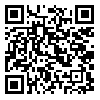دوره 12، شماره 1 - ( 12-1402 )
جلد 12 شماره 1 صفحات 58-49 |
برگشت به فهرست نسخه ها
Ethics code: IR.MAZUMS.REC.1399.7869
Download citation:
BibTeX | RIS | EndNote | Medlars | ProCite | Reference Manager | RefWorks
Send citation to:



BibTeX | RIS | EndNote | Medlars | ProCite | Reference Manager | RefWorks
Send citation to:
Malekzadeh R, Assadi T. Managed Care After Discharge of COVID-19 Patients in North Iran. Iran J Health Sci 2024; 12 (1) :49-58
URL: http://jhs.mazums.ac.ir/article-1-897-fa.html
URL: http://jhs.mazums.ac.ir/article-1-897-fa.html
ملک زاده رویا، اسدی تورج. Managed Care After Discharge of COVID-19 Patients in North Iran. علوم بهداشتی ایران. 1402; 12 (1) :49-58
گروه بهداشت عمومی، مرکز تحقیقات علوم بهداشتی، دانشکده بهداشت ، roya.malekzadeh30@yahoo.com
چکیده: (1828 مشاهده)
Background and Purpose: After-discharge follow-up is one of the branches of managed care used for information exchange, health education, early diagnosis of symptoms, symptom management, and high-quality aftercare services. The present study aims to elucidate the managed care of COVID-19 patients after discharge from hospitals affiliated with Mazandaran University of Medical Sciences, Mazandaran Province, Iran.
Materials and Methods: The present cross-sectional study was conducted in 2019. The study sample included all COVID-19 patients discharged from public, private, and social security hospitals affiliated with Mazandaran University of Medical Sciences. The census method was used to recruit 14625 discharged patients. The data collection tool was based on the information registration form “Follow-up of the treatment process of discharged COVID-19 patients,” which was prepared in three sections (demographic, clinical characteristics, and follow-up of the treatment process) based on the opinions of 15 experts. Data analysis was carried out via the chi-square test in SPSS software, version 21.
Results: The findings of the demographic section showed that 35.8% of COVID-19-related admissions were over 65 years old. Intensive care unit (ICU) admissions were necessary for 13% of cases, with the highest ICU admission rates among those aged 65 and above. Based on the findings of the clinical characteristics section, the most common underlying disease (46.7%) was diabetes, and the most common symptom upon admission was fever (higher than 38°C) (44.8%). Also, according to the findings of the “treatment follow-up” section, 7.04% of the discharged patients were readmitted, and 14.5% of patients infected their family members with COVID-19. Also, 57.82% adhered to the health and safety protocols and self-quarantine at home, which varied in different months.
Conclusion: Follow-up after the discharge of COVID-19 patients as one of the branches of managed care increased the compliance with health principles and decreased the rate of COVID-19 infection of the patient’s family members and the readmission of patients. Therefore, appropriate follow-up after discharge is suggested as a low-cost method to shorten the recovery period of patients, prevent other family members from contracting this disease, and detect the worsening of disease symptoms among discharged patients.
Materials and Methods: The present cross-sectional study was conducted in 2019. The study sample included all COVID-19 patients discharged from public, private, and social security hospitals affiliated with Mazandaran University of Medical Sciences. The census method was used to recruit 14625 discharged patients. The data collection tool was based on the information registration form “Follow-up of the treatment process of discharged COVID-19 patients,” which was prepared in three sections (demographic, clinical characteristics, and follow-up of the treatment process) based on the opinions of 15 experts. Data analysis was carried out via the chi-square test in SPSS software, version 21.
Results: The findings of the demographic section showed that 35.8% of COVID-19-related admissions were over 65 years old. Intensive care unit (ICU) admissions were necessary for 13% of cases, with the highest ICU admission rates among those aged 65 and above. Based on the findings of the clinical characteristics section, the most common underlying disease (46.7%) was diabetes, and the most common symptom upon admission was fever (higher than 38°C) (44.8%). Also, according to the findings of the “treatment follow-up” section, 7.04% of the discharged patients were readmitted, and 14.5% of patients infected their family members with COVID-19. Also, 57.82% adhered to the health and safety protocols and self-quarantine at home, which varied in different months.
Conclusion: Follow-up after the discharge of COVID-19 patients as one of the branches of managed care increased the compliance with health principles and decreased the rate of COVID-19 infection of the patient’s family members and the readmission of patients. Therefore, appropriate follow-up after discharge is suggested as a low-cost method to shorten the recovery period of patients, prevent other family members from contracting this disease, and detect the worsening of disease symptoms among discharged patients.
نوع مطالعه: پژوهشي |
موضوع مقاله:
مديريت خدمات بهداشتي و درماني
ارسال پیام به نویسنده مسئول
| بازنشر اطلاعات | |
 |
این مقاله تحت شرایط Creative Commons Attribution-NonCommercial 4.0 International License قابل بازنشر است. |








